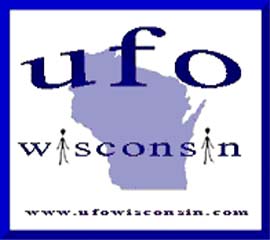 |
Home |
File a UFO Report |
View UFO Reports |
|
![]()
Date: November 2001
Source: Sky & Telescope
Most everyone has glimpsed an occasional meteor. But imagine what it would be like to see hundreds – or even thousands – of them in a single night. Such a spectacle may occur in the hours before dawn on Sunday, November 18th. In fact, if astronomers' predictions hold up, skywatchers in North America can expect to see their most dramatic meteor display in 35 years.
These meteors, called Leonids because they appear to radiate from the constellation Leo (the Lion), will signal the arrival of fast-moving dust particles shed by Comet Tempel-Tuttle, which loops around the Sun every 33 years. Like a truck on a dirt road, the comet creates a dusty wake that spreads along its orbit. When Earth crosses that orbit in mid-November each year, skywatchers usually see a handful of shooting stars, a weak meteor "shower." But three times each century Earth crosses the dust stream where it's especially dense, and when that happens we experience what astronomers call a meteor "storm." The comet passed through its closest to the Sun in early 1998, and the arrival of each year's Leonids has been much anticipated each year since then.
Meteors are created when sand- or pebble-size grains strike Earth's atmosphere at high speed and create streaks of superheated air along their paths. The Leonids, which are one of a dozen or so annual meteor showers caused by streams of cometary debris, arrive at a blistering 44 miles (71 kilometers) per second – the fastest known. Two years ago the Leonids briefly peppered the skies over Europe and the Middle East with 3,000 meteors per hour (nearly one every second). In 1966 lucky observers in the southwestern United States gaped in awe for 20 minutes as Leonid meteors fell at the rate of 40 per second!
In the November 2001 issue of Sky & Telescope, meteorologist Joe Rao assesses the predictions provided by three teams of specialists, who agree that two dramatic storms appear likely this month. A burst lasting perhaps two hours is expected in the predawn hours of November 18th for observers throughout most of North and Central America. The maximum rates should occur near 10:00 Universal Time (corresponding to 5:00 a.m. EST, 4:00 a.m. CST, 3:00 a.m. MST, and 2:00 a.m. PST). With no moonlight spoiling the view, the storm may briefly spawn anywhere from several hundred to 1,000 or 2,000 meteors per hour for observers with clear, very dark skies. A fourth prediction, issued recently by NASA researcher Peter Jenniskens, argues that the hourly rate could top 4,000.
An even bigger storm is expected 8 hours later for viewers rimming the far-western Pacific Ocean. Because these locations lie on the other side of the International Date Line, this peak occurs before dawn on November 19th. Several thousand meteors may streak across the sky for an hour or so starting about 18:00 UT, which is 3:00 or 4:00 a.m. in eastern Australia (depending on location); 2:00 a.m. in Japan; and 1:00 a.m. in western Australia, the Philippines, and eastern China.
Back to News Stories